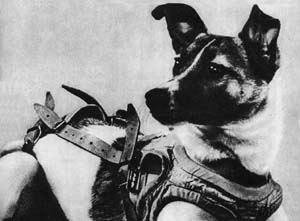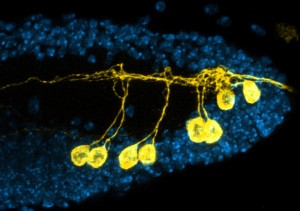Posted by Nicky Drayden on Oct 19, 2014 in
Reviews AE: The Canadian Science Fiction Review
http://aescifi.ca/index.php/fiction/35-short-stories/2257-the-speaking-ground
Author Website: http://www.ericasatifka.com/
The doctor of a colony several years removed from any possibility of outside help, is desperate to keep the colonists from destroying themselves. They seem to be answering some siren call of the land–one patient has ruined her gut from ingesting rocks and dirt, a boy has gone blind but claims to see every thing this world has to offer. Measures are taken to keep others from leaving the safety of their dome and suffering the same fate, but will it be enough?
Even though he was blind and restrained, the boy smiled beatifically. He’d refused to name his kidnappers, the older children who had driven him out to a nearby meadow and left him there. As a result, all vehicles were put on lockdown until the colony’s eventual rescue by Central Control, estimated at three years from now. All exits were sealed, the code to trip the doors known only to the mayor and the doctor. The doctor kept the code in his pocket, a little lifeline.
This piece of flash takes just a few minutes to read, but manages to churn the gut nonetheless. Lots of grotesque images, and a clear path to oblivion, paved with self-destruction and misplaced optimism. From a couple paragraphs in, we know this is not going to end well, but still it keeps the reader wondering–What is the planet saying? Why is it speaking to these people? What does it want from them? Perhaps if you are curious enough, you’ll find a way to step out of the dome yourself.
Tags: AE, Colonies, Flash Fiction, Short Women in Space
Posted by Nicky Drayden on Oct 16, 2014 in
Reviews Lightspeed
http://www.lightspeedmagazine.com/fiction/the-hymn-of-ordeal-no-23/
Author Website: rhiannonrs.tumblr.com.
I’ll let the strength of this opening stand on it’s own:
Your brother’s bones, suspended in mineral fluids, turn as smoothly and shine as brightly as the oil-coated joints of the mechanism they guide. When you touch the heavy plastic that separates you from his body, it is cold. The iron plate that serves to cover what is left of his face turns towards the tapping, and nausea wells deep in your throat. You catch a glimpse of yellow fat, the hole of a socket, nerves that once bundled into the base of an eye now strung behind the iron half-mask.
Flesh did not make the transit to deep space whole, only guts packed in gel and nerves strung into wires, the delicate threads that extend to outer sensors, thrusters, and lenses. That is what they are now. Not people, not soldiers, but shrikes: the folded warbirds sent through void to cleanse it of the invaders, to impale them on their own stardust ruins, to leave broken chassis and frozen corpses scattered as warning to others who might threaten us. If the invaders left corpses—you have never seen them, only the scars of their passage left across the skin of Earth.
Interstellar war and deconstructed humans go together like peanut butter and jelly. Kind of a literal jelly, too, I guess, with lots of floating body bits. This story scores high on the ick factor, if you’re into that sort of thing. (**Raises hand**) But beyond that, this is a masterfully written piece of flash that grips you from beginning to end. There’s the lost sibling relationship that tugs at the heart strings. There’s the alien war and morality lines that get drawn in response. While the narrator never leaves Earth, the weight of space is constantly on her mind, across much of her lifetime. We all know that people come back from war changed, but what happens to the people like her brother who are changed so drastically before they even fight a single battle, reduced to strung nerves and gristle? So many deep questions are posed in this short piece and my only response to Rhiannon is: More, please!
Tags: Flash Fiction, Lightspeed Magazine, Nicky's Pick, Short Women in Space, Star Wars
Posted by Nicky Drayden on Oct 13, 2014 in
Reviews Daily Science Fiction
http://dailysciencefiction.com/science-fiction/space-travel/ruth-nestvold/thirteen-ways-of-looking-at-a-monkey
Author Website: http://www.ruthnestvold.com/
A monkey is dead on the surface of Caipora–a lush, Earth-like planet that was assumed to be habitable by humans. On the exploration ship above the atmosphere, the champagne has already been uncorked, though after the second rhesus monkey is sent down and suffers the same fate as the first, it seems the celebrations were a bit premature. Who would care about the lives of two monkeys lost on the cusp of such a great discovery? Apparently, Pam, the monkeys’ keeper does. She’s got four monkeys left under her care, and is determined to keep it that way.
Vladaya wants to send Multik now. I argued that we should send a robot first, try to recover Jane’s body; we could examine it in quarantine and determine the cause of death. But Ikuru said Jane could have eaten something, although she’s trained not to. Putting the blame on me and Jane. I said there’s no evidence, but Vladaya sided with Ikuru, saying we couldn’t know for sure. Before we try picking her up with a robot, it would be easier to send down another monkey.
Easier.
In this flash piece, we catch a glimpse of a woman who has become attached to what were intended to be tools. Though she takes her passions to an extreme, her decision to question the moral dilemma is a valid one. Why is one life worth more than another? It may be easier to raise and train these monkeys than it is to build and send down a robot, but that doesn’t make it the right decision. Or the wrong one, depending on your stance. It isn’t as if this is the first time animals have been used to further science. Should their sacrifices be held in the same regard as those as their human counterparts? It is a fine line to walk. This story is a simple one, but the questions it dredges up are quite complex. If space exploration were looked at as a cross-species endeavor, would it shift the view? One day, when the first dog on Mars is playing fetch with her person, maybe we’ll find the answer in the wag of her tail.
 In 1957, Laika became the first animal launched into orbit, paving the way for human spaceflight.
In 1957, Laika became the first animal launched into orbit, paving the way for human spaceflight.
Creative Commons
Tags: Daily Science Fiction, Flash Fiction, Monkeys, Short Women in Space, Space Exploration



